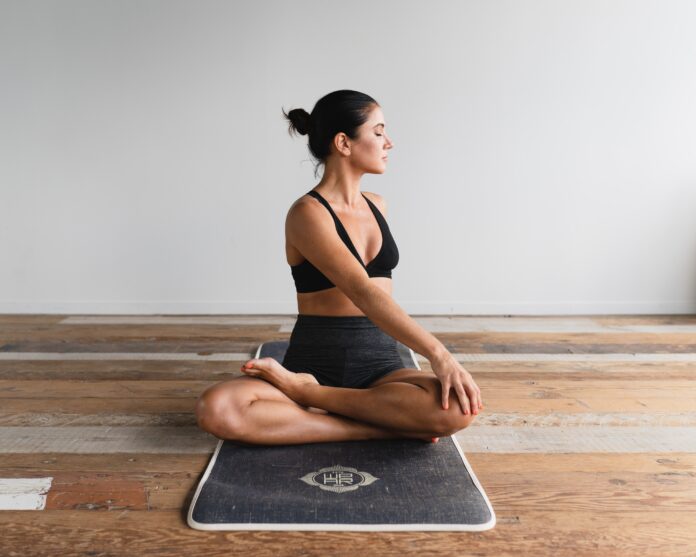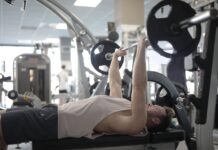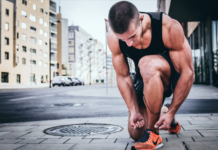Introduction
Pilates is a fantastic way to strengthen your core, improve your flexibility, and increase whole-body awareness. You probably know that already if you’re reading this guide. But if you aren’t familiar with the practice or have only tried it once or twice at a gym or studio and weren’t quite sure what happened, this Beginner’s Guide will help get you started on the path to Pilates mastery.
Core strength is essential.
The core is the center of your body, and it includes your pelvis, lower back, abdominal muscles, and the muscles that wrap around each side of your spine. Pilates focuses on strengthening this area to help improve posture and muscle balance overall.
To achieve strong core strength, you need to perform exercises that work for multiple muscle groups at the same time—the more muscles you engage in an exercise, the more challenging it will be for you. Exercises like planks do just that because they require you to hold your body in a straight line while engaging both large and small muscle groups all across your body (including those in your arms). They also help strengthen abdominal muscles by keeping them tight throughout the movement. You can use planks as a way to practice breathing properly while maintaining good form; inhale through the nose as air fills up the lungs before exhaling through the mouth as air leaves the lungs (this should take about five seconds). Once you feel comfortable with this exercise on both hands and knees, try out variations by moving into side plank or knee-to-elbow plank positions with one leg lifted off ground for added difficulty!
Slow and steady will get you there faster.
Pilates is a fitness regimen that has been around for more than 100 years. It was originally developed by Joseph Pilates as a way to strengthen the body and balance the mind, and it’s used by millions of people all over the world today.
Pilates is different from most other forms of exercise because it focuses on larger groups of muscles instead of isolating individual muscles. This means that while you may not be able to isolate them in your first few classes, over time you’ll start to see results from all those small changes you’ve made!
If you’re new to Pilates, Look at Auckland pilates.
No pain, only gain.
When you first begin Pilates, you’ll feel that burn. And it will be worth it. As a beginner, you’ll be able to progress faster than the average person because of your fresh mind and body. However, if the pain becomes unbearable and lasts for more than a few days after your workout ends, see a doctor immediately.
Pilates is an exercise routine that focuses on strengthening and stretching muscles while also increasing flexibility and balance through controlled movements with resistance bands or weights. If done correctly and safely—and as recommended by your instructor—you will build strong core muscles to prevent injury during everyday activities such as running or playing sports (or even just picking up groceries).
Listen to the experts!
One of the most important things to take away from this post is the importance of listening. There are so many different teachers, styles, and approaches to Pilates that it’s easy to get overwhelmed by all of the options. While it may seem like there’s no right or wrong way to do Pilates, there are some things you should be aware of when starting this exercise routine.
First of all: listen to your teacher! They are there for a reason and they know what they’re doing (usually). Most importantly though, listen to your body. If something doesn’t feel right then don’t push through it or attempt anything too difficult just because someone else is doing so in class—you’ll only end up hurting yourself more than helping yourself! Last but not least: listen with both mind and body during each session; if something feels wrong then chances are high that it isn’t working out as intended which means that you need an adjustment made before continuing further into the workout routine
Practice makes perfect.
Practice makes perfect. This is true in any area of life, and it’s especially true when it comes to Pilates. While you’ll get more out of your classes if you’ve been doing some at-home practice, even if it’s just a few minutes a day on the mat or with a resistance band for a few weeks before class starts, there are ways to make up for lost time once you start. You can always move at a slower pace than your teacher or instructor does in class—you don’t have to push yourself too hard as long as you’re moving through the exercise without pain or discomfort!
Keep a routine.
The best way to keep yourself motivated and committed to your pilates practice is by keeping a routine. Even if it’s just once a week, it’s important to put in the effort of going to your studio or doing pilates at home. You should also try not to make excuses for skipping sessions; instead, try making them part of your schedule and acting as if they were mandatory appointments that could not be missed. This will help ensure that there are no interruptions or excuses for skipping out on them.
If you can’t make it into the studio at all during the week, then try doing two or three days of pilates exercises at home during the weekend as an alternative! This will help keep up with things while also giving yourself some time off from going every day.
Pilates is a fantastic way to strengthen your core, improve your flexibility, and increase whole-body awareness.
Pilates is a fantastic way to strengthen your core, improve your flexibility, and increase whole-body awareness.
The core is the center of your body. It’s responsible for supporting the rest of your body and keeping you upright when you move. The core muscles are made up of those in the abdomen and lower back (the muscles closest to the spine). These muscles keep everything from falling out or collapsing in on itself – which would be bad news bears!
Conclusion
We hope this guide has helped you to get started with Pilates. Remember that the best thing is to just try it out, see what works for you, and have fun!











